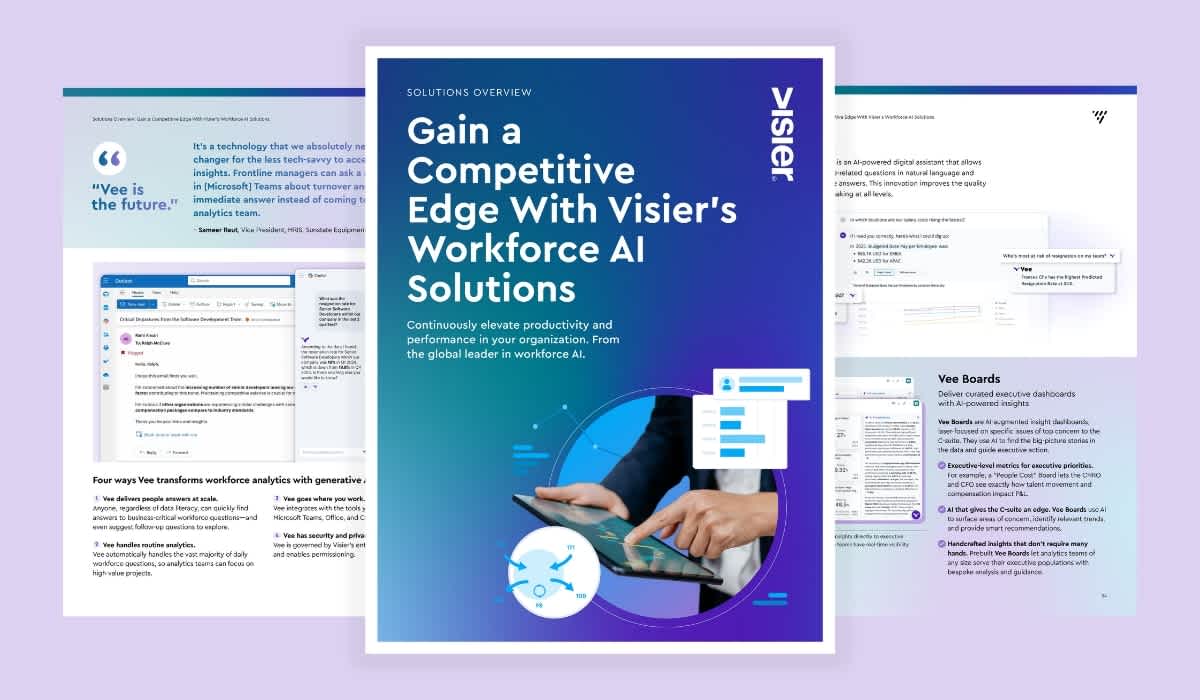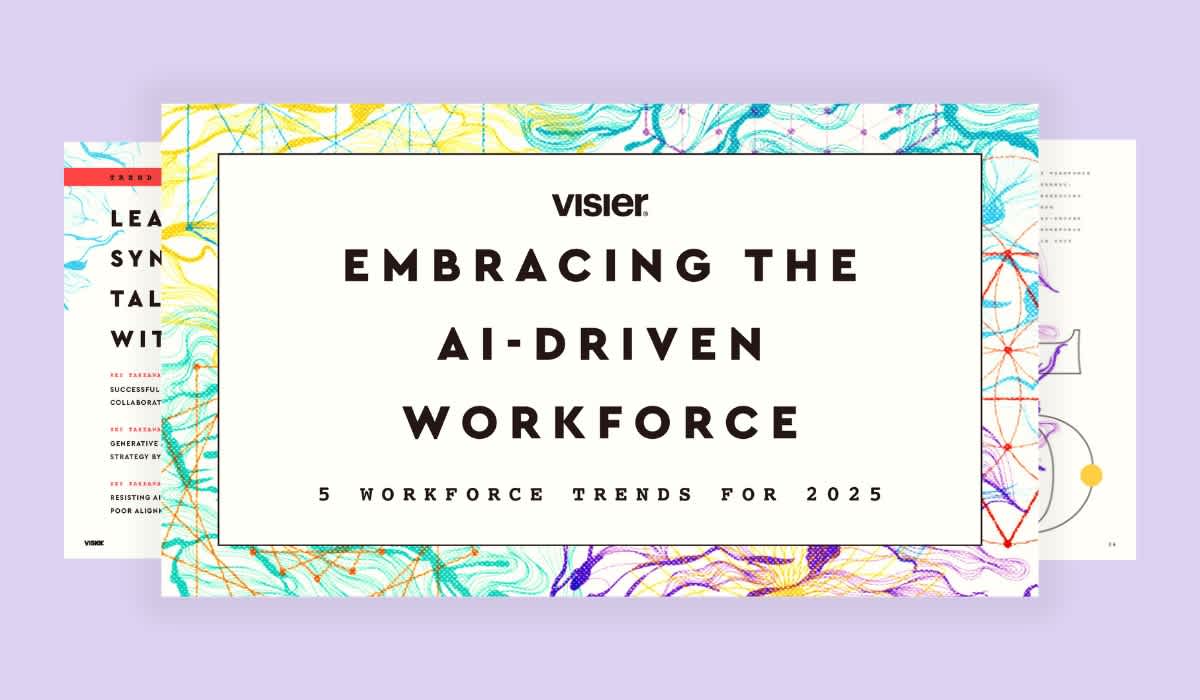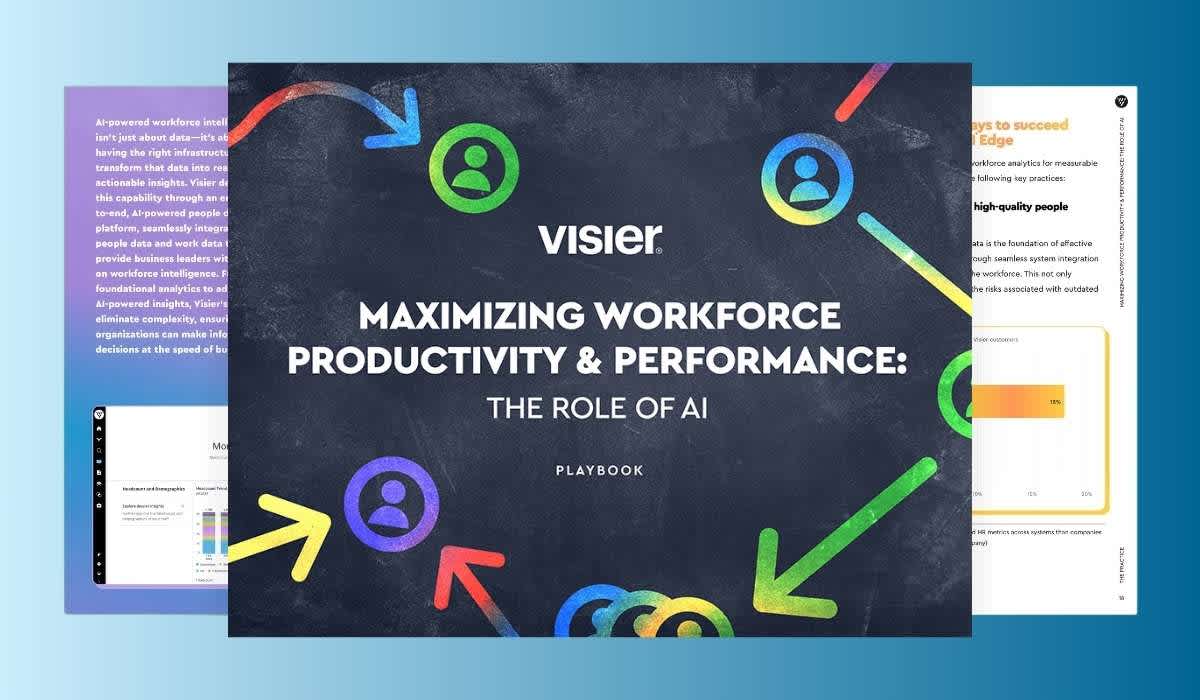4 Strategic Ways Generative AI Bridges the Gap Between HR and Business Productivity
The ways in which generative AI will impact HR and workforce productivity boil down to four key areas—beginning with removing siloes.

When using generative AI you should always look beyond common benefits like faster speed and output. Its true advantage lies in how it transforms the way businesses operate.
It does so by connecting data across systems in an easy manner, breaking down silos within, and rendering actionable insights to executives and managers. Far too often, decisions are made on fragmented information.
So before defining job roles, how do you make sure they align with business priorities?
Before investing in training, how do you measure its real impact?
Before hiring, how do you know what drives performance?
AI can answer such questions by integrating and analyzing data across your workforce. This is not merely an HR evolution. Instead, it can give you a competitive edge. The companies that know how to use workforce AI to their advantage will gain an edge over competitors, ensuring productivity, agility, and long-lasting success.
But why?

GenAI is poised to close the People Impact Gap
We’ve long said people data is business data, and businesses that can harness the power of their people data see 73% higher profit margin and 137% higher return on assets.
But most businesses still aren’t using workforce data to optimize their business decision-making. This failure to leverage people data to make sound business decisions is what we call the People Impact Gap, a gap that restricts productivity, agility, and performance.
Workforce AI Edge technology closes this gap. Reuniting data from disparate systems, tearing down the walls between them, and offering real-time actionable insights allow leaders to organize their thoughts like never before. These organizations use AI to make far more intelligent decisions, maximize the productivity of their workforce, and gain true competitive advantage.
![[VIDEO] Harness the Power of AI to Drive Workforce Productivity (EMEA)](https://images.ctfassets.net/lbgy40h4xfb7/7B5iIED3oBQj4TDiAJvlNS/492112e985f13fff1198cc3c1ebb618b/drive-workforce-productivity-with-ai.jpg?w=1920&h=1080&fl=progressive&q=50&fm=jpg)
4 ways generative AI will help connect HR and business performance
The ways in which generative AI will impact HR and close the People Impact Gap boil down to these four key areas.
1. HR will no longer operate in silos
As Josh Bersin has pointed out, HR is fundamentally interconnected. Total rewards impact employee engagement, which impacts retention, which impacts talent acquisition, which impacts DEI…and on and on we go. These individual areas shouldn’t be looked at in isolation—they’re an interconnected system. By pulling one lever, you impact another.
Yet, traditional HR systems keep these functions siloed, limiting visibility into the bigger picture.
The problem? Most HR teams use static dashboards filled with lagging indicators like engagement scores, compa-ratios, or DEI targets. This only provides disconnected data that doesn't reveal cause-and-effect relationships or provide real-time insights.
But Visier's Workforce AI Edge is changing that by integrating all people and work data and transforming fragmented HR metrics into dynamic, always-on workforce intelligence.
With prebuilt connectors, APIs, and integrations, Visier’s AI-powered People Data Platform solves this by seamlessly integrating HR, work, and business data from systems like HRIS, CRM, finance, sales, and operations.
With Generative AI you can go even further. Instead of manually searching for insights, you can get instant answers to questions that matter for your business and make better decisions faster. AI also breaks down the barriers of data literacy, system complexity, and siloed analytics.
When you connect Salesforce and Gong with Visier, you can align sales productivity, workforce engagement, and operational data to improve team performance, speed up onboarding, and reduce turnover. Your leaders will gain clarity into how different groups drive the sales cycle, allowing you to change strategies for improved outcomes.
2. HR will be a strategic driver of the business like never before
In the C-suite, bringing data to the table has always been the price of admission, and HR is no longer exempt. But there have been challenges in bringing data to the table:
The data isn’t trusted or, worse yet, isn’t accurate
There’s no way for the C-suite to get real-time insights
An answer to one question only leads to more questions and a lag in answering them
Generative AI will solve each of these challenges in one fell swoop, and also create new opportunities for HR to drive workplace productivity. One new way is by marrying people data with the operational data that runs your business—things like sales revenue, customer satisfaction, and productivity.
Vee Boards make these insights actionable. These dashboards rely on AI-augmented insights to address workforce issues most important to the C-suite and convert workforce data into strategic intelligence. Vee Boards also connects workforce productivity and business outcomes.
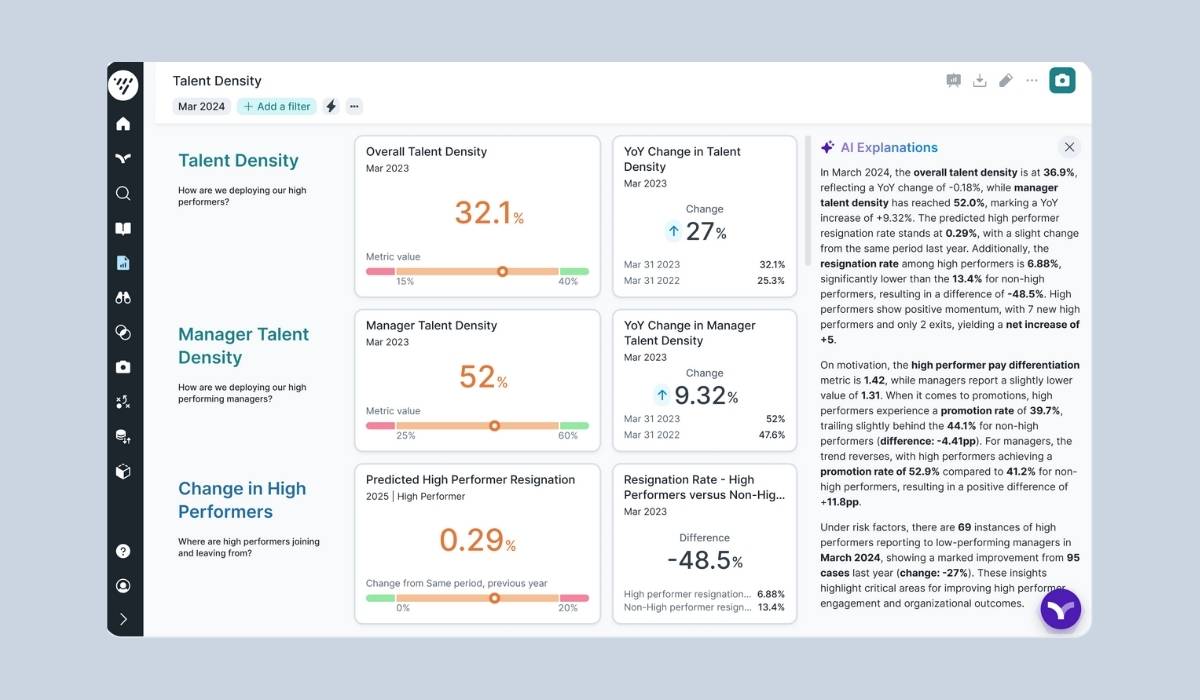
The Talent Density Vee Board gives executives AI-driven insights into workforce and leadership performance.
Here's an example:
A ''People Cost'' board allows the CHRO and CFO to see exactly how talent flows and compensation affect the P&L. AI gives the C-Suite an advantage by employing AI to highlight key areas of concern, call out patterns, and recommend actionable approaches for optimizing workforce strategies.
The best part? These issues don't require hard, manual work thanks to the prebuilt Vee Boards that give analytics teams bespoke analyses and strategic insights.
3. Better managers and leaders will become a reality
One of the biggest hurdles to workforce productivity is arming those leaders with the data they need about their people. In fact, according to a recent Deloitte study, only 3% of leaders say they have enough data to make sound decisions about people.
Why don’t managers have enough people data? It’s a classic "last mile problem"—managers and leaders either don’t know where to find the data, don’t know how to interpret the data, or can’t get answers quickly enough. Generative AI makes each of those challenges vanish.
Managers make thousands of decisions every year that impact people and, ultimately, impact the business. Aside from the obvious decisions like who to hire or who to promote, there are thousands of micro-decisions to be made every day:
How do I make sure I have enough capacity to meet demand?
Who should I put on this project?
How should I manage overtime this week?
Who should I recommend for training & development?
How can I better onboard new talent?
Who do I need to have “stay” conversations with?
Now imagine a world where managers get to simply ask whatever they want about employees in a completely natural way, and the answer would come back in seconds and be accurate. This is exactly the future Vee is creating.
Vee supports managers at all levels in making better, time-efficient decisions. The impact of hundreds of thousands of improved micro-decisions across an organization would be exponential.
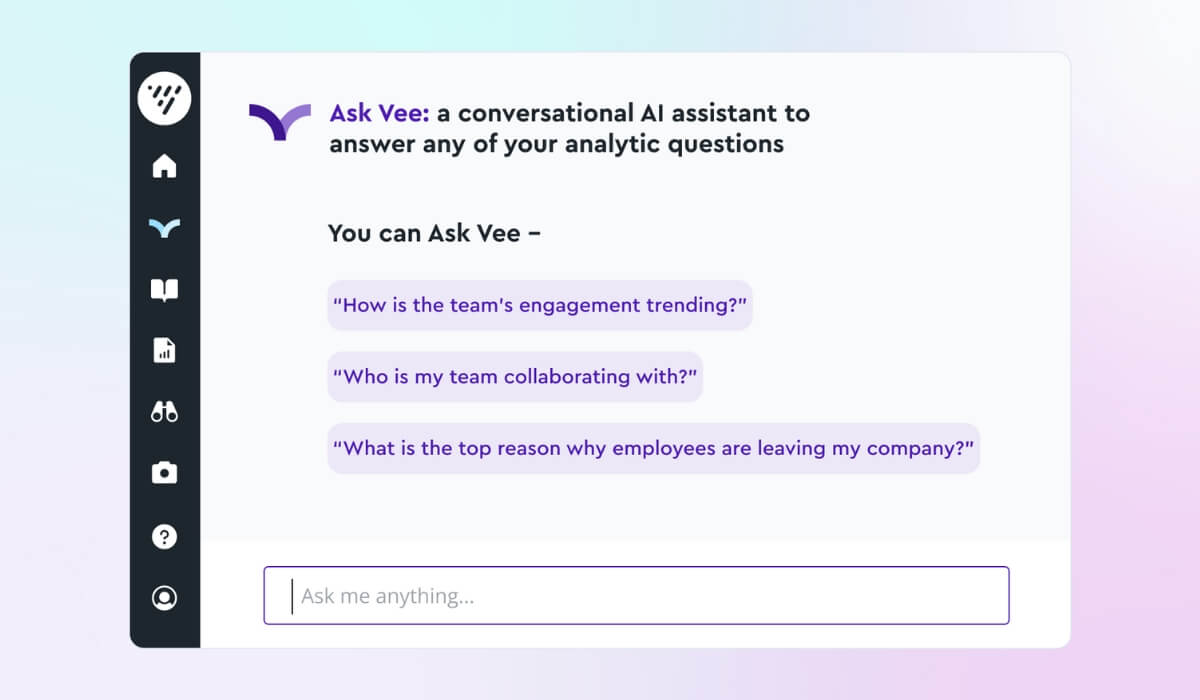
Here's how Vee can change your own workflows and keep your team productive:
Vee delivers people answers at scale so anyone, regardless of data literacy, can quickly find answers to business-critical workforce questions.
Vee automatically processes daily workforce inquiries, freeing up analytics teams to focus on high-value projects.
Vee is embedded within everyday tools like Microsoft Teams and Office, ensuring that managers can access insights quickly.
Governed by Visier’s enterprise security model, Vee enables permissioning to ensure the right people have access to the right data.
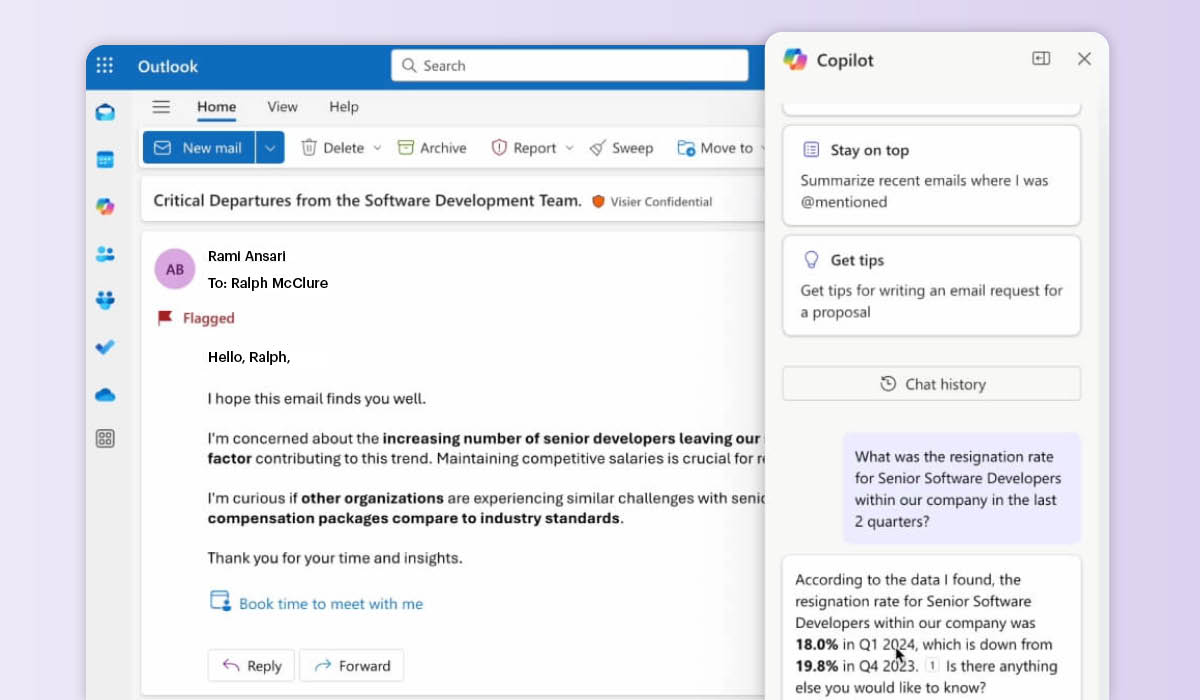
Visier's Vee AI technology integrates with Microsoft Copilot for AI insights in the flow of work
4. Integrate a Workforce AI Edge into your processes
The AI era will create winners and losers. And you can only succeed if you can rapidly adapt your work and workforce to the change. For this, you need the right data.
A Workforce AI Edge enables companies to:
Elevate the productivity of your employees
Understand how people impact business outcomes
Continuously shape-shift your workforce
With Visier, organizations can unite and activate work and people data so that HR isn't just a supporting player but a force behind business success and higher workforce productivity. By using AI-powered insights, your leaders will gain back the confidence to support significant decisions, enhance workforce agility, and beat the competition.
Generative AI holds promise, but gaining a Workforce AI Edge is what counts
There’s a tendency to fall in love with the solution and overlook the problem you’re trying to solve. Generative AI is a means to an end, but you don’t need to start there.
Your organization has a lot of people data waiting to be used for complex analysis. Unlocking that data, integrating it across systems, and making sense of it has never been easier with tools like Visier.
We can help you take the first step in transforming your workforce decisions. Want to see Visier in action? Request a demo and experience the change.

Read more about generative AI
Read The HR Leader's Guide to Generative AI to learn 10 foundational ways in which genAI will redefine the landscape of what is possible for HR to deliver to the business.
HR use cases are growing every day for generative AI from recruiting to performance talks—here are some generative AI prompts to get you started.
Generative AI innovations like digital assistants are changing the way we work—but are they secure enough to use with people data? Read on to find out.
